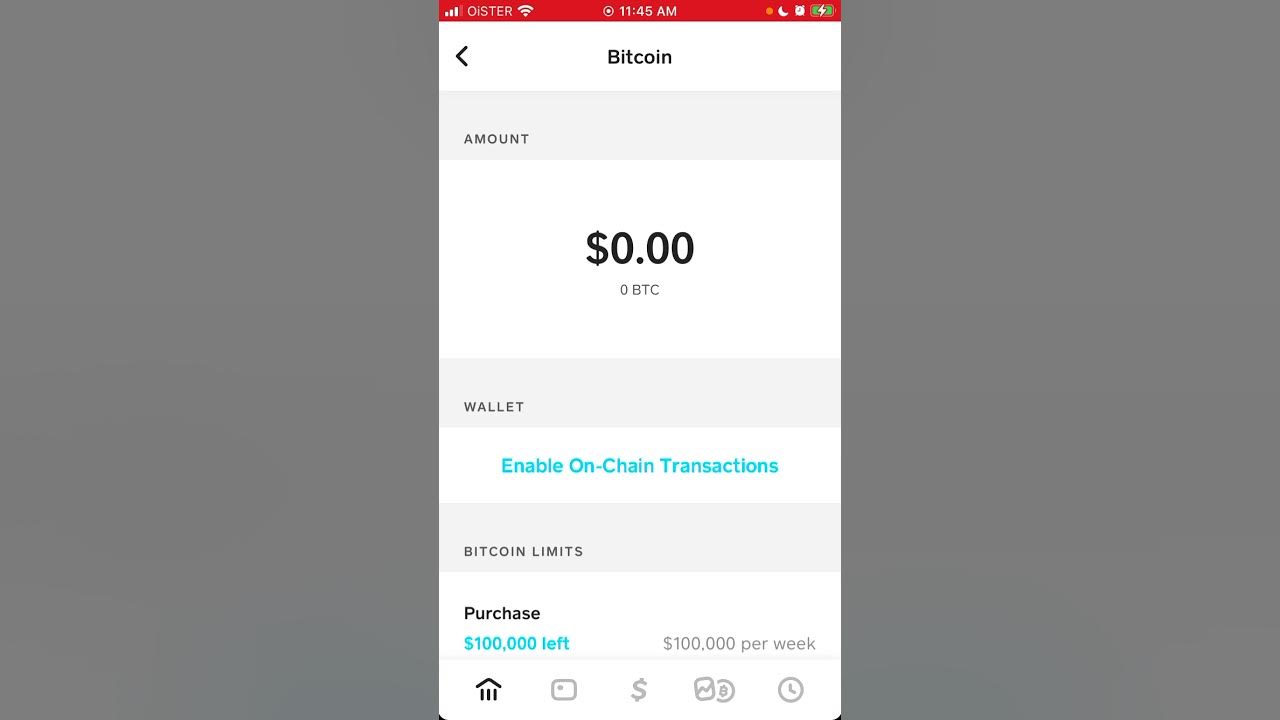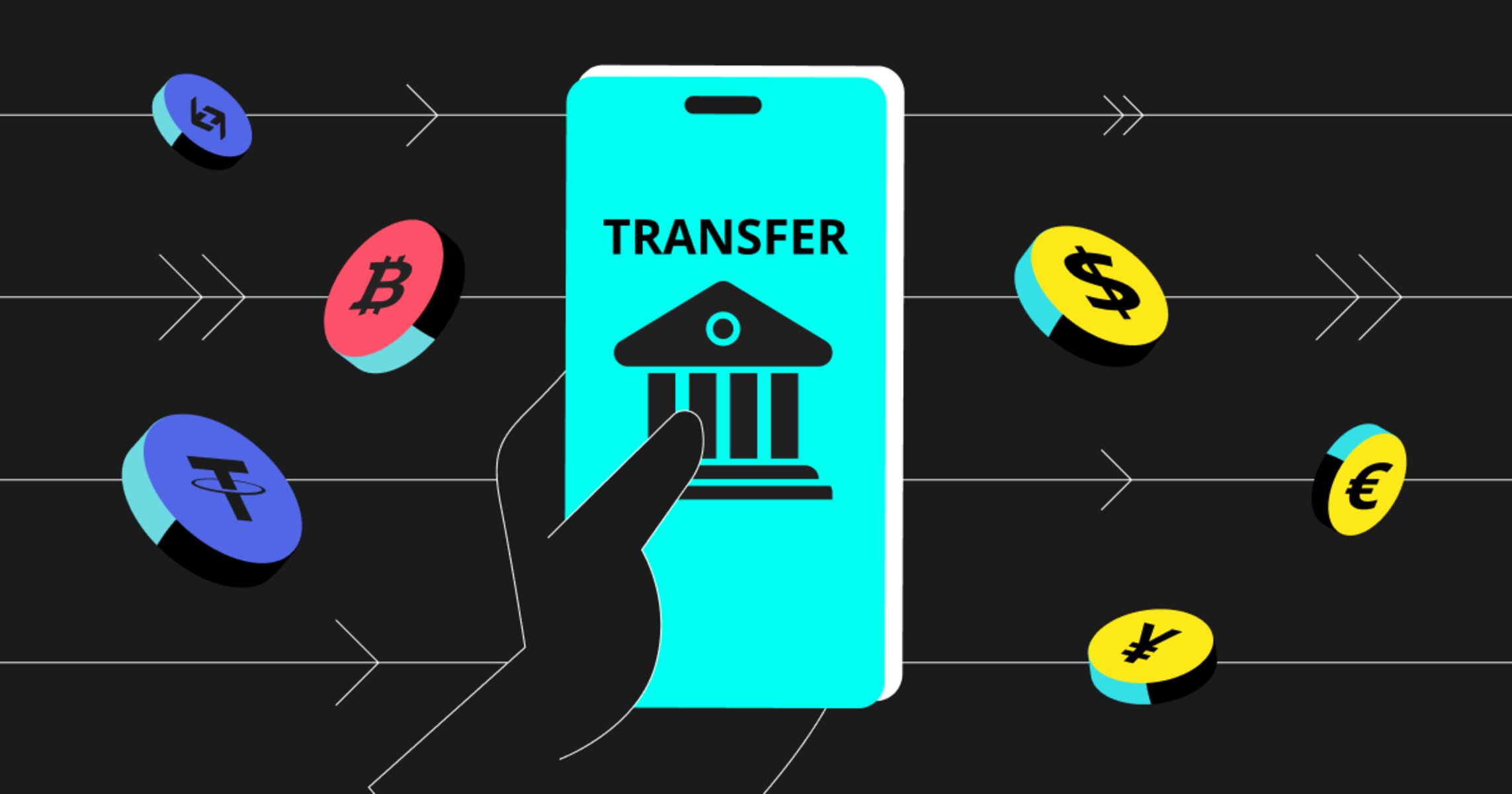Introduction
Welcome to the world of blockchain, a revolutionary technology that is transforming various industries and establishing new paradigms of trust and security. Blockchain, essentially a digital ledger, is responsible for recording and storing transactional data in a decentralized and transparent manner. It has garnered significant attention not only for its role in underpinning cryptocurrencies like Bitcoin, but also for its potential to revolutionize various sectors including finance, healthcare, supply chain, and more.
But have you ever wondered where exactly a blockchain is located? Is it hosted on a single server, or is it spread across multiple nodes in a network? Understanding the location and storage of a blockchain is crucial in comprehending its security, scalability, and overall functionality.
In this article, we will delve into the intricacies of blockchain storage and explore the different types of storage options available. We will examine the differences between centralized and decentralized storage, as well as discuss various storage options such as cloud storage, on-premises storage, and distributed storage. Additionally, we will touch upon the distinction between public and private blockchain storage and weigh the advantages and disadvantages of each approach.
So, if you are curious to unlock the mysteries of blockchain storage and gain a deeper understanding of where exactly this transformative technology resides, let’s embark on this enlightening journey together.
What is a blockchain?
At its core, a blockchain is a decentralized and distributed ledger that records and verifies transactions across a network of computers. Unlike traditional centralized systems where a single authority controls the database, a blockchain operates on a peer-to-peer network, making it tamper-proof and transparent.
The fundamental building blocks of a blockchain are “blocks” of data that are linked together using cryptographic hashing. Each block contains a collection of transactions, and once a block is added to the chain, it becomes a permanent part of the ledger. This immutability ensures the integrity and security of the recorded data.
The decentralized nature of a blockchain means that no single entity has complete control over the system. Instead, multiple nodes within the network collaborate to validate and verify transactions, eliminating the need for intermediaries such as banks or government authorities. This not only reduces costs but also improves the efficiency and trustworthiness of the process.
One of the key features of a blockchain is its ability to achieve consensus among multiple participants without the need for a central authority. This is achieved through consensus algorithms such as Proof-of-Work (PoW) or Proof-of-Stake (PoS), where nodes in the network compete or cooperate to validate transactions and secure the network.
By ensuring transparency and immutability, a blockchain enables participants to have a single source of truth, eliminating the need for reconciliation and dispute resolution. This makes it particularly well-suited for industries such as finance, supply chain management, healthcare, and voting systems.
Overall, a blockchain provides a secure, transparent, and decentralized way of recording and verifying transactions. Its potential applications and benefits are vast, and as the technology continues to evolve, we can expect to see its widespread adoption in various sectors.
How does a blockchain work?
Understanding how a blockchain works is key to comprehending its power and potential. At a high level, a blockchain operates on a series of interconnected blocks, each containing a unique set of transactions.
The process begins with a new transaction. When a participant initiates a transaction, it is broadcasted to the network. The network’s nodes then validate and verify the transaction using consensus algorithms, ensuring its authenticity and integrity.
Once the transaction is validated, it is grouped with other verified transactions to form a new block. This block is then added to the existing blockchain, creating a permanent and unalterable record. Each block contains a reference to the previous block, creating a chain-like structure.
To maintain the security and integrity of the blockchain, various cryptographic techniques are employed. One such technique is hashing. Each block is assigned a unique identifier called a hash, which is generated by applying a cryptographic algorithm to the data within the block. This hash serves as a digital fingerprint, ensuring that any change to the block’s data is immediately detectable.
Additionally, blockchain systems use consensus mechanisms to agree on the state of the network and validate transactions. The most well-known consensus algorithm is Proof-of-Work (PoW), which requires nodes to solve complex mathematical problems in order to add new blocks to the chain. This ensures that the network is secure and resistant to tampering.
Another prominent consensus algorithm is Proof-of-Stake (PoS), where instead of solving complex computational puzzles, validators are chosen based on the number of coins they hold and are willing to “stake” as collateral. This approach reduces energy consumption and enhances scalability.
Furthermore, since a blockchain is decentralized, multiple copies of the entire blockchain exist on different nodes within the network. This redundancy ensures that even if one node experiences a failure, the blockchain remains available and accessible. It also makes the blockchain highly resistant to censorship and attacks.
Overall, the combination of consensus algorithms, cryptographic techniques, and decentralization enables a blockchain to function as a secure, transparent, and immutable ledger. It provides a trustless system that eliminates the need for intermediaries, streamlines processes, and fosters accountability and transparency across various industries.
Where is a blockchain stored?
When it comes to the storage of a blockchain, it is important to understand that it is not stored in a single location or on a single server. Instead, a blockchain is stored and distributed across multiple nodes within a network, forming a decentralized storage system.
The data of a blockchain is typically stored in individual blocks. Each block contains a collection of transactions and has a unique identifier called a hash. It also contains a reference to the previous block, creating a chain-like structure that forms the blockchain.
In a decentralized blockchain network, every participating node stores a copy of the entire blockchain. This redundancy ensures that the data remains intact even if some nodes go offline or become compromised. It also adds an extra layer of security, as altering the data on a single node would require tampering with the majority of the network’s copies.
It is worth mentioning that the actual storage mechanism can vary depending on the type of blockchain. In public blockchains like Bitcoin and Ethereum, anyone can participate in the network and store a copy of the blockchain on their computer. This ensures that no single entity has control over the network and reinforces the decentralized nature of the technology.
On the other hand, private or permissioned blockchains are often stored on a limited number of trusted nodes. These nodes are typically operated by organizations or consortiums, which maintain control and restrict access to the blockchain.
Blockchain storage can also be categorized into different types, including centralized storage, decentralized storage, cloud storage, on-premises storage, and distributed storage. Each type has its own advantages and considerations in terms of security, accessibility, and scalability.
In the next sections, we will delve into these different types of blockchain storage options, discussing their characteristics, benefits, and drawbacks. By understanding the various storage options available, we can gain insights into the flexibility and infrastructure needed to support different blockchain implementations.
Types of blockchain storage
Blockchain storage can be classified into different types, each offering distinct characteristics and considerations. These types include centralized storage, decentralized storage, cloud storage, on-premises storage, and distributed storage.
1. Centralized storage: In centralized storage, a single entity or organization maintains control over the entire blockchain and its data. This approach is often seen in private or permissioned blockchains, where the network participants trust a centralized authority to manage the database. While centralized storage provides a high level of control and security, it lacks the decentralized and transparent nature that is core to public blockchain systems.
2. Decentralized storage: In contrast to centralized storage, decentralized storage distributes the blockchain data across multiple nodes in a network. Each participating node stores a copy of the blockchain, ensuring redundancy and fault tolerance. This approach not only enhances network resilience but also improves transparency and eliminates single points of failure. Public blockchains like Bitcoin and Ethereum rely on decentralized storage to maintain the integrity and security of the network.
3. Cloud storage: Cloud storage utilizes remote servers hosted on the internet to store blockchain data. This approach offers scalability, as cloud platforms can dynamically allocate resources to meet the growing demands of the blockchain network. Cloud storage also provides ease of access and reduces the burden of managing physical infrastructure. However, concerns around data privacy and security may arise when relying on third-party cloud service providers.
4. On-premises storage: On-premises storage involves hosting the blockchain on local servers within an organization’s premises. This approach provides complete control over the infrastructure and ensures data privacy and security. It is commonly employed in private blockchain implementations where organizations want to maintain full ownership and control over their data. However, on-premises storage can be more resource-intensive and require upfront investment in hardware and maintenance.
5. Distributed storage: Distributed storage leverages a network of interconnected nodes to store and distribute blockchain data across multiple locations. This approach enhances data availability and reduces the risks associated with single points of failure. Distributed storage systems like IPFS (InterPlanetary File System) and Swarm provide decentralized peer-to-peer storage for blockchain networks, enabling efficient and resilient data storage.
Choosing the appropriate storage type depends on various factors such as the level of control desired, the need for scalability, the importance of data privacy, and the specific requirements of the blockchain use case. Understanding the tradeoffs and features of each storage type can help organizations design a blockchain infrastructure that aligns with their goals and priorities.
Centralized storage
Centralized storage is a type of blockchain storage where a single entity or organization controls the entire blockchain and its data. In this approach, a centralized authority acts as the custodian of the blockchain, managing and maintaining the database on behalf of the network participants.
This type of storage is commonly seen in private or permissioned blockchains, where trust is established among the network participants, and a central authority is entrusted with the responsibility of managing the blockchain. Centralized storage provides several benefits:
1. Control: With centralized storage, a single entity has complete control over the blockchain. This control extends to managing access permissions, updating the blockchain, and enforcing security measures. This level of control can be advantageous in situations where strict governance is necessary.
2. Security: Centralized storage allows for the implementation of robust security measures. Since the entire blockchain is managed by a central authority, it is easier to enforce security protocols and prevent unauthorized access. Centralized storage can also enable rapid response to security incidents and quick resolution of any issues that may arise.
3. Efficiency: Centralized storage systems are often optimized for performance and efficiency. By having a single point of control, operational processes and data management can be streamlined, leading to improved efficiency in storing and retrieving blockchain data.
However, there are some considerations and potential drawbacks associated with centralized storage:
1. Single point of failure: Centralized storage introduces a single point of failure. If the centralized authority encounters technical issues or becomes compromised, the entire blockchain could be at risk. This vulnerability undermines the resilience and fault tolerance that decentralized systems offer.
2. Lack of transparency: Centralized storage may limit transparency as the participants in the network must rely on the central authority to provide accurate and reliable information about the blockchain. This can raise concerns about data integrity and trust, particularly in systems where transparency is a crucial requirement.
3. Dependence on the central authority: Participants in a centralized storage system rely on the central authority to operate the blockchain effectively. If the central authority’s interests diverge from those of the participants, it may result in a loss of trust or a breakdown in the network’s functioning.
Overall, centralized storage provides a level of control and security that can be advantageous in certain scenarios. However, it is crucial to carefully consider the tradeoffs and potential drawbacks when opting for a centralized storage approach for a blockchain implementation.
Decentralized storage
Decentralized storage is a critical component of blockchain systems, as it aligns with the core principles of transparency, security, and resilience. Unlike centralized storage, where a single entity controls the entire blockchain, decentralized storage distributes the blockchain data across multiple nodes within a network, making it inherently resistant to censorship, tampering, and single points of failure.
In a decentralized storage system, each participant within the network holds a copy of the complete blockchain, forming a distributed ledger. This redundancy ensures that even if some nodes become unavailable or compromised, the data is still accessible and the blockchain remains intact.
Decentralized storage offers several advantages:
1. Security: A decentralized storage system enhances security by eliminating the vulnerability of a single point of failure. Since the blockchain data is distributed across multiple nodes, an attacker would need to gain control over the majority of the network’s nodes to compromise the integrity of the blockchain. This robustness makes decentralized storage highly resilient against cyber threats.
2. Transparency: Decentralized storage fosters transparency by allowing all network participants to verify and validate the blockchain data. Each node contains a copy of the entire blockchain, providing visibility into all transactions, ensuring accountability, and supporting the concept of a trustless system.
3. Trustless nature: With decentralized storage, participants do not need to rely on a central authority to maintain the integrity of the blockchain. The consensus mechanisms employed in a decentralized network, such as Proof-of-Work or Proof-of-Stake, allow participants to collectively validate and agree on the state of the blockchain without the need for intermediaries.
Despite its advantages, decentralized storage also presents certain considerations:
1. Storage requirements: With every participant holding a copy of the entire blockchain, the storage requirements can be substantial, especially as the blockchain grows larger over time. This requirement can introduce scalability challenges, particularly in networks with a large number of participants or systems that generate a high volume of transactions.
2. Network connectivity: Since each node in a decentralized storage system contributes to the network’s overall health and functionality, a reliable and robust network infrastructure is essential. Participants need to ensure consistent connectivity to contribute to the validation and distribution of the blockchain data effectively.
3. Consensus mechanisms: Decentralized storage relies on consensus algorithms to agree upon the state of the blockchain. While these mechanisms ensure the security and integrity of the ledger, they can also introduce computational or energy costs associated with the consensus process.
In summary, decentralized storage plays a vital role in maintaining the core principles of blockchain technology. It enhances security, transparency, and resilience, providing a trustless and tamper-proof storage solution for blockchain data. However, the scalability and network connectivity considerations should be taken into account when implementing decentralized storage for a blockchain system.
Blockchain storage options
When it comes to storing a blockchain, there are several options available, each with its own set of characteristics and considerations. The choice of storage option depends on factors such as scalability requirements, data privacy, security, and the specific use case of the blockchain implementation. Let’s explore some of the most common blockchain storage options:
1. Cloud storage: Cloud storage leverages remote servers hosted on the internet to store blockchain data. Cloud storage offers scalability and flexibility, as resources can be easily allocated or scaled based on demand. It also reduces the need for physical infrastructure and provides high availability. However, reliance on third-party cloud service providers may introduce concerns around data privacy and security.
2. On-premises storage: On-premises storage involves hosting the blockchain on local servers within an organization’s premises. This approach provides complete control over the infrastructure and ensures data privacy and security. On-premises storage is commonly used in private or permissioned blockchain networks where organizations want to maintain ownership and control over their data. However, it requires upfront investment in hardware, maintenance, and IT expertise.
3. Distributed storage: Distributed storage systems, such as IPFS (InterPlanetary File System) and Swarm, distribute blockchain data across multiple nodes within a network. This approach enhances data availability and reduces the risks associated with single points of failure. Distributed storage promotes decentralization and provides resilient storage for blockchain data. However, the storage and retrieval processes may require additional computational resources and introduce network latency.
4. Public vs. private blockchain storage: Public blockchains like Bitcoin and Ethereum rely on decentralized and distributed storage across a network of participants. Anyone can participate in the network and store a copy of the blockchain. In contrast, private or permissioned blockchains often store data on a limited number of trusted nodes. These nodes are typically operated by organizations or consortiums, maintaining control and restricting access to the blockchain data.
It is important to note that there is no one-size-fits-all solution for blockchain storage. The choice of storage option depends on the specific needs and requirements of the blockchain implementation. Organizations should carefully evaluate the pros and cons of each option and consider factors such as scalability, security, privacy, and control when designing the storage infrastructure for their blockchain systems.
Cloud storage
Cloud storage is a popular option for storing blockchain data, leveraging remote servers hosted on the internet to store and manage the blockchain. This storage option offers several benefits and considerations for blockchain implementations.
Scalability and Flexibility: Cloud storage provides scalability, allowing organizations to dynamically allocate resources based on the needs of the blockchain network. Cloud platforms offer the ability to scale storage capacity, processing power, and bandwidth, ensuring that the blockchain can handle increasing volumes of data, transactions, and network participants. This flexibility enables seamless growth and adaptation as the blockchain ecosystem evolves.
High Availability: Cloud storage platforms typically offer high levels of availability, ensuring that blockchain data is accessible and reliable. Cloud service providers often have redundant systems and data centers in different geographical locations, reducing the risk of data loss and minimizing downtime. This high availability is crucial for maintaining the integrity and continuous operation of the blockchain.
Cost-Efficiency: Cloud storage can be cost-effective, as organizations only pay for the resources they use. They avoid upfront investment in physical infrastructure and reduce the costs associated with hardware maintenance, upgrades, and data center management. Cloud storage providers also benefit from economies of scale, allowing them to offer competitive pricing models that can be advantageous for blockchain projects with varying resource requirements.
Data Security: Cloud storage providers typically invest heavily in security measures and protocols to protect the integrity and confidentiality of the stored data. They employ encryption, access controls, and monitoring mechanisms to safeguard the blockchain against unauthorized access, data breaches, and other security threats. Organizations should, however, carefully evaluate the security practices and certifications of the chosen cloud service provider to ensure that adequate security measures are in place.
Vendor Lock-In: One consideration for cloud storage is the potential dependency on a particular cloud service provider. Organizations must be mindful of the vendor lock-in risks associated with relying solely on a single provider for their blockchain storage. Careful planning and architectural design can mitigate these risks by considering portability and interoperability between different cloud providers or combining cloud storage with other storage options.
Cloud storage, with its scalability, high availability, cost efficiency, and security measures, offers a viable option for storing blockchain data. By leveraging cloud services, organizations can focus on building and innovating their blockchain applications without the burden of managing and maintaining physical infrastructure.
On-premises storage
On-premises storage involves hosting the blockchain data on local servers within an organization’s premises. With this storage option, organizations have complete control over the infrastructure and management of their blockchain data. On-premises storage offers several benefits and considerations for blockchain implementations.
Data Privacy and Security: On-premises storage provides enhanced data privacy and security. Organizations can implement their own security measures, access controls, and encryption protocols to protect the integrity and confidentiality of their blockchain data. The data remains within the organization’s physical boundaries, reducing the risks associated with external security threats.
Control and Customization: On-premises storage empowers organizations with full control over their blockchain infrastructure. They have the flexibility to customize the hardware, network configuration, and storage solutions, tailored to their specific requirements. This level of control allows organizations to align the blockchain infrastructure with their existing IT policies and security protocols.
Compliance and Regulation: Certain industries, such as finance, healthcare, and government, have strict regulatory and compliance requirements. On-premises storage enables organizations to maintain compliance with industry-specific regulations and data protection standards. It offers greater visibility and control over data handling and ensures adherence to legal obligations.
Data Sovereignty: On-premises storage also provides organizations with the advantage of maintaining data sovereignty. They have jurisdiction and control over their data, ensuring compliance with local data protection regulations and minimizing potential concerns surrounding data sovereignty and cross-border data transfers.
Resource Requirements and Maintenance: On-premises storage requires organizations to invest in the necessary hardware, network infrastructure, and skilled IT personnel to manage and maintain the blockchain data. This can involve upfront costs and ongoing expenses for hardware upgrades, maintenance, and system administration. Organizations also need to allocate resources for backup and disaster recovery strategies to ensure data resilience and availability.
Scalability and Accessibility: On-premises storage may pose challenges related to scalability and accessibility. Scaling infrastructure to accommodate increased data volumes or transaction throughput can be resource-intensive, requiring careful capacity planning and hardware upgrades. Accessibility to the blockchain data may also be limited compared to cloud-based solutions, particularly for remote or distributed network participants.
Organizations opting for on-premises storage should carefully evaluate their specific needs, budget, security requirements, and compliance obligations. The decision to choose on-premises storage ensures data control, privacy, and compliance, but it comes with responsibility for infrastructure management and resource allocation.
Distributed Storage
Distributed storage is a storage option that leverages a network of interconnected nodes to store and distribute blockchain data. This storage approach enhances data availability, resilience, and security within a blockchain ecosystem. Distributed storage systems, such as IPFS (InterPlanetary File System) and Swarm, provide efficient and decentralized storage solutions for blockchain networks.
Data Redundancy and Fault Tolerance: In distributed storage, blockchain data is replicated across multiple nodes within the network. This redundancy ensures that even if some nodes experience failures or become unavailable, the data remains accessible and intact. Distributed storage mitigates the risk of data loss and increases fault tolerance, enhancing the reliability of the blockchain system.
Decentralization and Network Resilience: With distributed storage, no single central authority controls the entire blockchain data. Instead, the data is spread across a network of nodes, creating a decentralized storage infrastructure. This decentralization reduces the risk of a single point of failure and makes the network more resilient against attacks or malicious activities. The distributed nature of the storage system aligns with the core principles of blockchain technology.
Efficient Storage and Content Delivery: Distributed storage systems aim to provide efficient storage and content delivery mechanisms for blockchain data. IPFS and Swarm use content-based addressing, where data is retrieved and verified using cryptographic hashes, ensuring data integrity and preventing tampering. This approach optimizes the storage and retrieval process, promoting efficient utilization of network resources.
Network Bandwidth and Latency: Distributed storage systems may introduce network bandwidth and latency considerations. As data is distributed across nodes, network bandwidth usage can increase when multiple nodes fetch and retrieve the blockchain data. Additionally, network latency, which refers to the delay in data transmission within the network, may arise due to the distributed nature of the storage system. Careful network design and optimization strategies can help mitigate these concerns.
Data Availability and Consistency: Distributed storage systems prioritize data availability and consistency in the face of network partitions or node failures. Protocols and algorithms are employed to ensure that network participants can access and retrieve the blockchain data even during network disruptions. Consensus mechanisms, such as replication and file system audits, contribute to maintaining data availability and establishing data consistency across the distributed storage system.
Distributed storage offers an attractive option for blockchain networks seeking decentralized, fault-tolerant, and efficient storage solutions. Organizations considering distributed storage should evaluate the specific requirements of their blockchain implementations, including the anticipated network size, data volume, network bandwidth, and latency considerations to ensure optimal performance and resilience.
Public vs. Private Blockchain Storage
When it comes to blockchain storage, a key consideration is whether the blockchain is public or private. Public and private blockchains have distinct characteristics and requirements that influence the storage approach.
Public Blockchain Storage: In a public blockchain, such as Bitcoin or Ethereum, the blockchain data is stored on a vast network of decentralized nodes maintained by volunteer participants. Anyone can join the network, validate transactions, and store a copy of the blockchain. The distributed nature of public blockchain storage ensures transparency and prevents any single entity from controlling the data. However, the storage requirements for public blockchains can be significant, as every participant must store a complete copy of the blockchain. This introduces scalability challenges as the blockchain grows larger over time, requiring efficient consensus mechanisms and storage optimization techniques.
Private Blockchain Storage: Private blockchains restrict access to a limited number of trusted participants, often within an organization or consortium. In private blockchain storage, the data may be hosted on a selection of nodes controlled by the participating entities. Private blockchains often have higher throughput and more stringent privacy requirements, making storage and management more manageable. The number of nodes storing the blockchain may be lower compared to public blockchains, reducing the storage overhead and scalability concerns. However, organizations employing private blockchain storage need to ensure the reliability, redundancy, and security of their on-premises or cloud-based storage infrastructure.
Data Privacy and Access Control: Public blockchains prioritize transparency and open access, making the data publicly accessible to anyone. On the other hand, private blockchains require more stringent access controls to ensure that only trusted participants can obtain and interact with the stored data. Private blockchain storage often caters to organizations with specific privacy and confidentiality requirements, such as financial institutions, where sensitive data must be protected within controlled boundaries.
Performance and Throughput: Public blockchains can handle a vast number of transactions but have slower performance due to their decentralized nature and the need for consensus mechanisms. Private blockchains, being more centralized, typically offer higher transaction throughput and faster speeds. The storage infrastructure for private blockchains can be optimized to meet the performance requirements of the smaller network of participants.
Consensus Mechanisms and Security: The consensus mechanisms employed in public and private blockchains impact storage requirements. Public blockchains often use resource-intensive mechanisms like Proof-of-Work (PoW) or Proof-of-Stake (PoS) to achieve consensus among participants, requiring substantial computational resources and storage capacity. In contrast, private blockchains may utilize more lightweight consensus algorithms due to the reduced number of participants, resulting in less demanding storage needs.
Both public and private blockchain storage options have their advantages and considerations. Organizations should carefully assess their specific requirements, such as data privacy, performance, security, and the number of participants, to determine the most suitable storage approach for their blockchain implementation.
Advantages and Disadvantages of Different Storage Options
When it comes to blockchain storage, various options are available, each with its advantages and disadvantages. Understanding the tradeoffs of different storage options is crucial for selecting the most suitable approach for a blockchain implementation. Let's explore some of the key advantages and considerations of each storage option mentioned earlier.
Centralized Storage:
Advantages:
- High level of control over the blockchain and its data
- Robust security measures can be implemented
- Efficiency in managing and accessing the stored data
Considerations:
- Vulnerability to single point of failure
- Potential lack of transparency and trust
- Dependency on the central authority's management and governance
Decentralized Storage:
Advantages:
- Enhanced security and resilience through distribution of data
- Transparency and trust through decentralized control
- Elimination of single points of failure
Considerations:
- Potential scalability challenges and increased resource requirements
- Reliance on network connectivity and availability
- Consensus mechanisms may introduce additional computational costs
Cloud Storage:
Advantages:
- Scalability and flexibility to accommodate changing storage needs
- High availability and redundancy across geographic locations
- Potential cost savings by eliminating upfront infrastructure investment
Considerations:
- Concerns around data privacy and security on third-party cloud platforms
- Potential vendor lock-in and dependency
- Reliance on network connectivity for data access
On-Premises Storage:
Advantages:
- Complete control over the infrastructure and data governance
- Enhanced data privacy and security within organizational boundaries
- Compliance with industry-specific regulations and data sovereignty
Considerations:
- Upfront investment in hardware and ongoing maintenance costs
- Potential limitations in scalability and accessibility
- Requirement for skilled IT personnel for infrastructure management
Distributed Storage:
Advantages:
- Data redundancy and enhanced fault tolerance
- Decentralization and network resilience
- Efficient storage and content delivery mechanisms
Considerations:
- Increased network bandwidth and potential latency concerns
- Consistency and availability during network partitions
- Storage and retrieval processes may require additional computational resources
By evaluating the advantages and considerations of each storage option, organizations can make informed decisions about the most suitable storage approach for their blockchain implementation. Factors such as security requirements, scalability needs, data privacy concerns, and compliance obligations play a crucial role in determining the optimal storage solution.
Conclusion
Blockchain storage plays a crucial role in ensuring the security, transparency, and accessibility of blockchain data. The choice of storage option depends on factors such as scalability, data privacy, security, and the specific use case of the blockchain implementation.
Centralized storage provides control, security, and efficiency but introduces the risk of a single point of failure and potential lack of transparency. Decentralized storage, on the other hand, enhances security and resilience through data distribution but may require additional resources and network connectivity.
Cloud storage offers scalability, flexibility, and cost efficiency, but organizations must carefully evaluate data privacy and security concerns. On-premises storage empowers organizations with full control, data sovereignty, and compliance adherence, but it requires upfront investment and ongoing maintenance.
Distributed storage provides redundancy, fault tolerance, and efficient content delivery, but may introduce bandwidth and latency considerations. Understanding the advantages and considerations of each storage option enables organizations to make informed decisions based on their specific requirements.
Ultimately, the storage option chosen should align with the goals, security requirements, compliance obligations, and scalability needs of the blockchain implementation. Striking the right balance between security, accessibility, scalability, and control is essential in designing a robust and efficient storage infrastructure for blockchain applications.

























